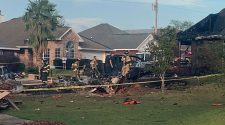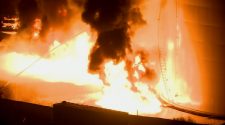SHERIDAN — New technology has improved the efficiency and accuracy of Sheridan’s sewer maintenance program, according to City Utilities Director Dan Roberts, and could lead to a more targeted approach to cleaning the city’s sewer pipes.
Sheridan’s sewer system consists of 130 miles of pipeline, with 2,750 sewer manholes, which also require maintenance.
Sixty percent of the pipes in the city sewer system are made of vitrified clay pipe and the remaining 40% are made of PVC pipe. The clay pipes in the system are much older — Roberts said they were discontinued in the 1970s — and require significantly more maintenance than the PVC pipes. The older pipes are especially prone to cracking, which makes it easier for tree roots to find their way into the pipes and potentially cause blockages.
Roots have proven one of the city’s major obstacles to maintaining the system.
“They can find their way through the smallest crack or crevice and just explode,” Roberts said.
Clearing Sheridan’s entire sewer system can take three years, Roberts said, which means new blockages sometimes develop in sections city crews have recently cleared.
Traditionally, Roberts said it has been difficult to tell whether a pipe is clear, and the city has relied on regular maintenance, rather than targeted maintenance, of its sewer lines.
Recently, however, a new piece of technology has helped the city develop more targeted maintenance plans.
In the past six months, Roberts explained, the city has been using a piece of equipment called the Sewer Line Rapid Assessment Tool — which the city purchased last year — to assess sewer pipes. City staff can hang receptors of the SL-RAT down two different manholes in the city sewer system and the device will send sound waves from one to the other.
The equipment records whether those waves encounter blockages and the severity of those blockages, which helps city staff develop a real-time picture of Sheridan’s sewer system.
“This device is really changing the game for us about how quickly we can assess sewers and then determine what is needed to actually maintain them,” Roberts said.
Since the city began utilizing the device, Roberts said it has found that more than half of the city’s pipes do not require maintenance. Without the picture of the system the SL-RAT provides, Roberts said the city would have blindly cleaned those pipes as part of its regular maintenance schedule. With a more accurate map of the system, though, Sheridan can save money by not applying unnecessary treatments and focusing resources where they are most needed in the system.
Roberts said city utilities staff has found more than 65 miles of pipe it did not have to perform maintenance on in the past six months, which has saved nearly $70,000 in maintenance costs.
Utility Maintenance Superintendent Ken Hirschman said the technology will be especially helpful in combating the spread of roots in the pipes. With the SL-RAT’s map of the system, he said staff can clear out areas of pipe where roots are starting to grow, which makes maintenance much easier. Under the former maintenance plan, the roots would have years to grow and could develop into a complete blockage.
















